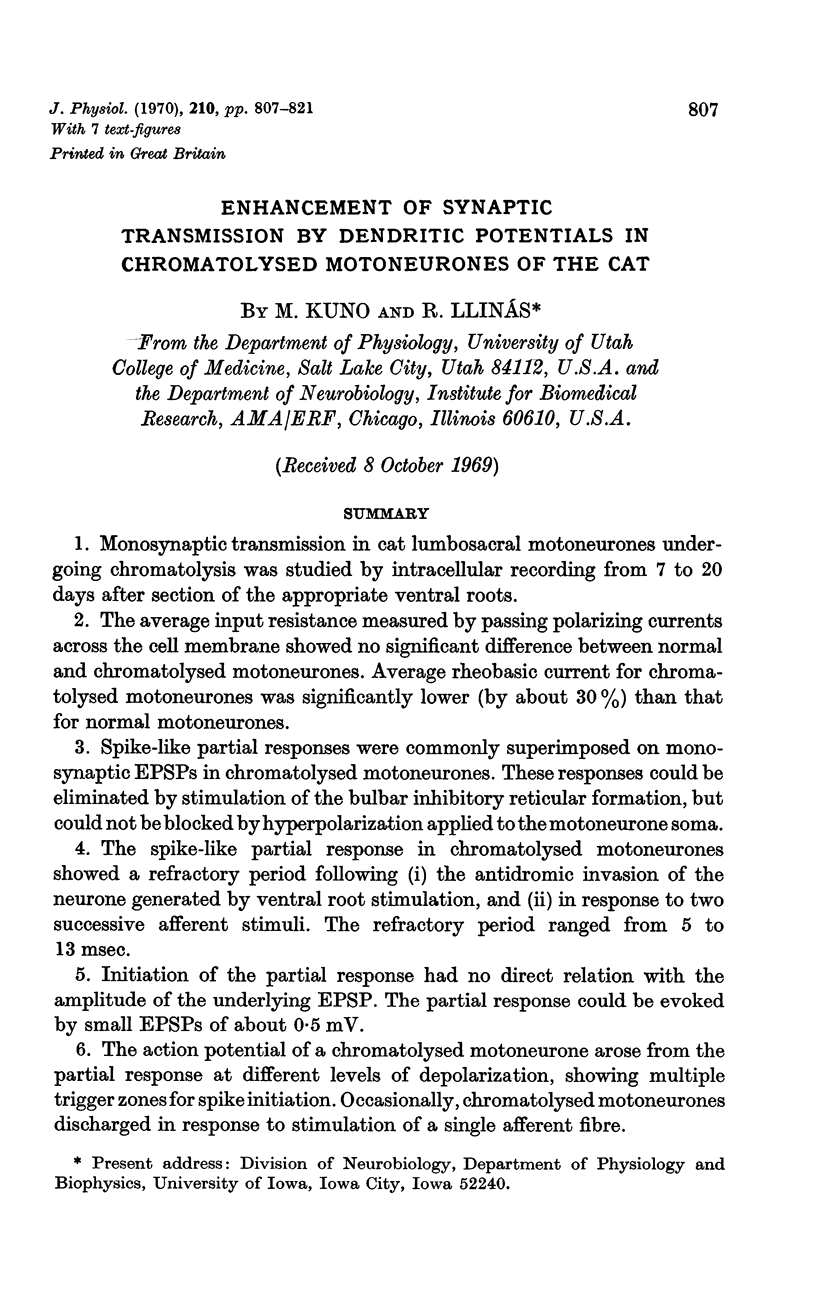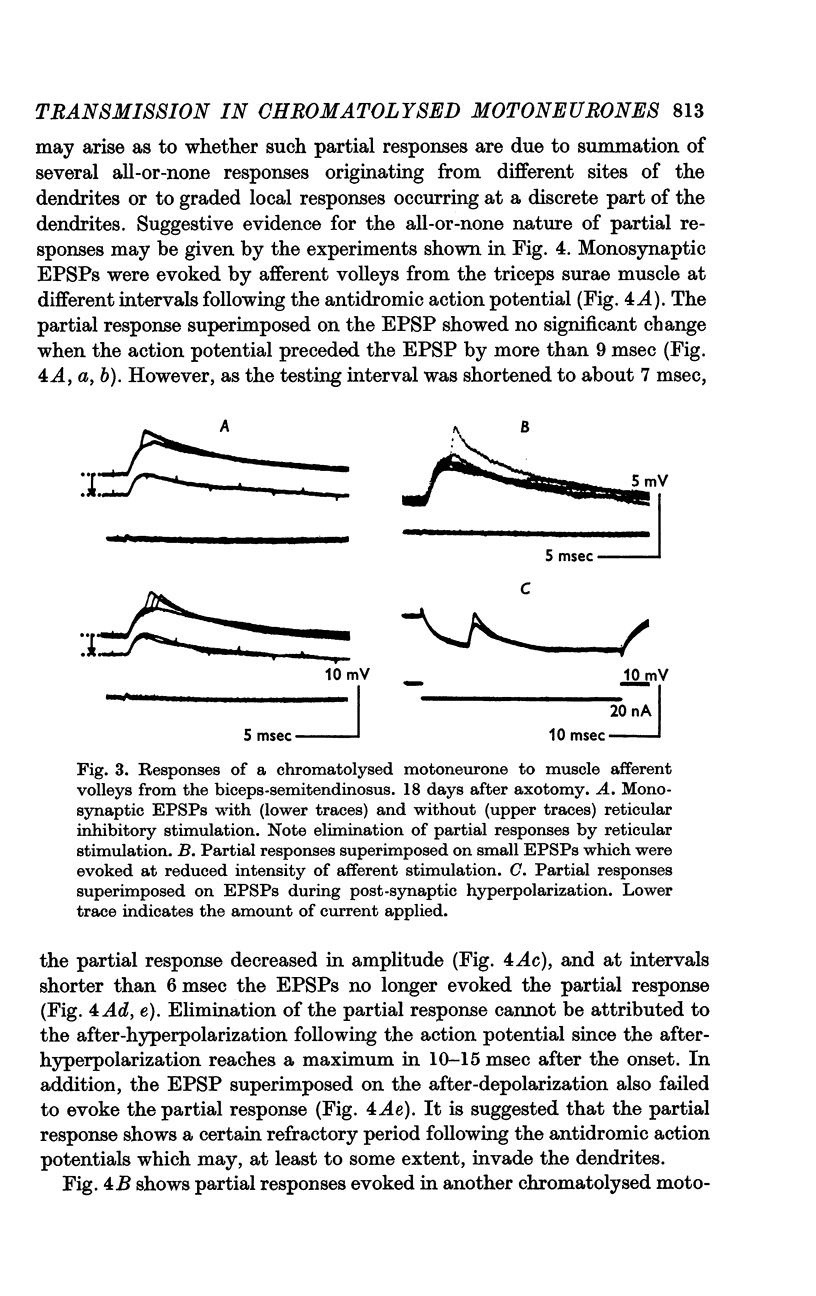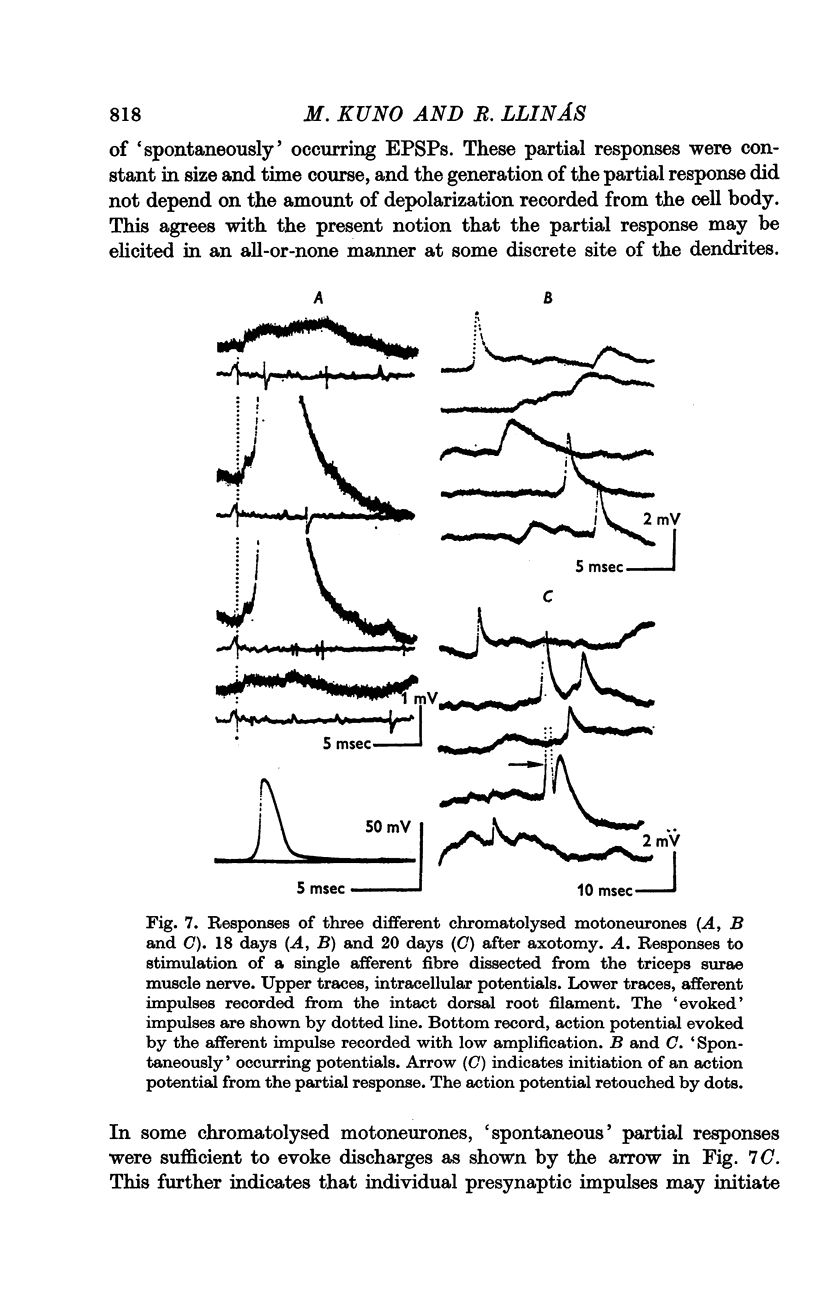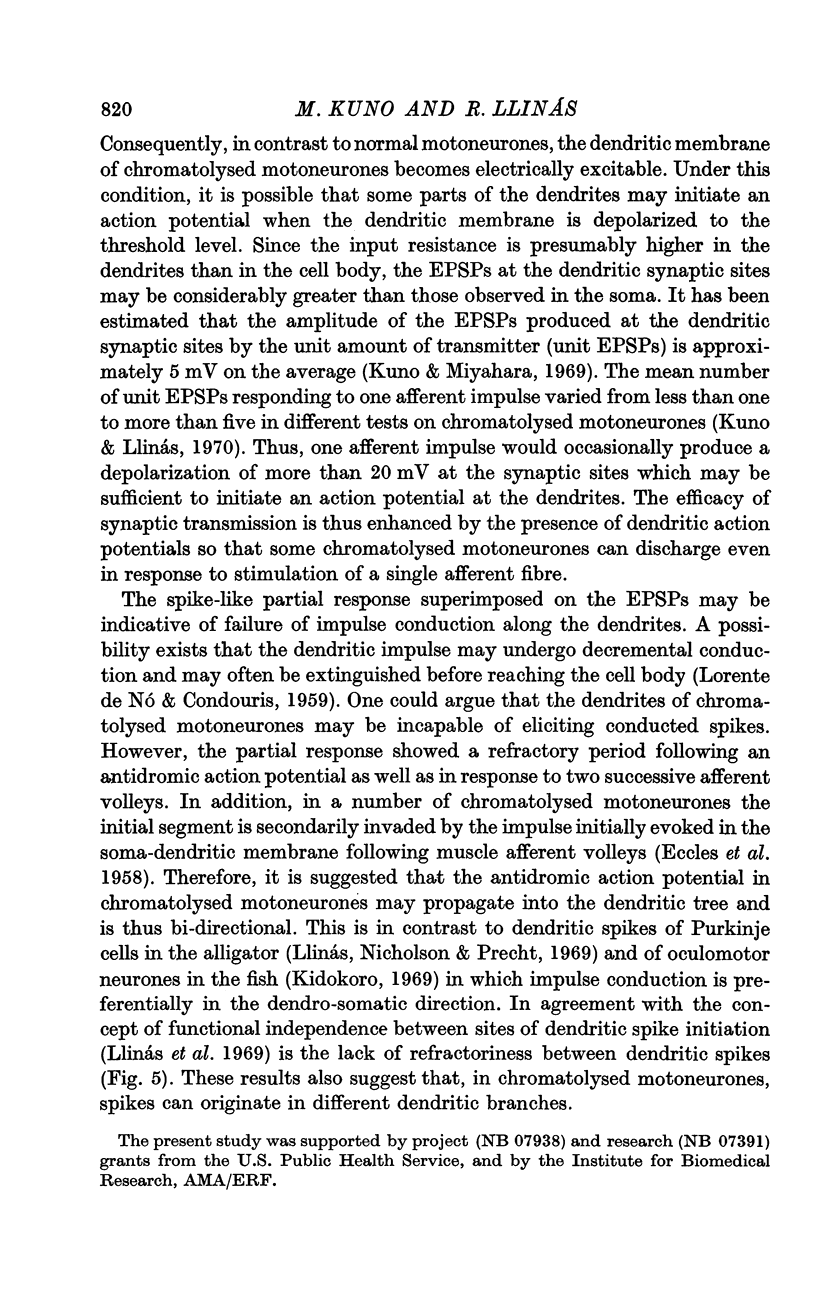Abstract
1. Monosynaptic transmission in cat lumbosacral motoneurones undergoing chromatolysis was studied by intracellular recording from 7 to 20 days after section of the appropriate ventral roots.
2. The average input resistance measured by passing polarizing currents across the cell membrane showed no significant difference between normal and chromatolysed motoneurones. Average rheobasic current for chromatolysed motoneurones was significantly lower (by about 30%) than that for normal motoneurones.
3. Spike-like partial responses were commonly superimposed on monosynaptic EPSPs in chromatolysed motoneurones. These responses could be eliminated by stimulation of the bulbar inhibitory reticular formation, but could not be blocked by hyperpolarization applied to the motoneurone soma.
4. The spike-like partial response in chromatolysed motoneurones showed a refractory period following (i) the antidromic invasion of the neurone generated by ventral root stimulation, and (ii) in response to two successive afferent stimuli. The refractory period ranged from 5 to 13 msec.
5. Initiation of the partial response had no direct relation with the amplitude of the underlying EPSP. The partial response could be evoked by small EPSPs of about 0·5 mV.
6. The action potential of a chromatolysed motoneurone arose from the partial response at different levels of depolarization, showing multiple trigger zones for spike initiation. Occasionally, chromatolysed motoneurones discharged in response to stimulation of a single afferent fibre.
7. In neurones where more than one spike-like response was obtained, interaction between dendritic responses showed no refractoriness.
8. It is concluded that the partial response is an all-or-none event originating at some discrete site on dendrites, and that its presence increases the efficacy of synaptic excitation in chromatolysed motoneurones.
Full text
PDF














Selected References
These references are in PubMed. This may not be the complete list of references from this article.
- BROCK L. G., COOMBS J. S., ECCLES J. C. Intracellular recording from antidromically activated motoneurones. J Physiol. 1953 Dec 29;122(3):429–461. doi: 10.1113/jphysiol.1953.sp005013. [DOI] [PMC free article] [PubMed] [Google Scholar]
- DOWNMAN C. B. B., ECCLES J. C., MCINTYRE A. K. Functional changes in chromatolysed motoneurones. J Comp Neurol. 1953 Feb;98(1):9–36. doi: 10.1002/cne.900980104. [DOI] [PubMed] [Google Scholar]
- ECCLES J. C., LIBET B., YOUNG R. R. The behaviour of chromatolysed motoneurones studied by intracellular recording. J Physiol. 1958 Aug 29;143(1):11–40. doi: 10.1113/jphysiol.1958.sp006041. [DOI] [PMC free article] [PubMed] [Google Scholar]
- Kuno M., Llinás R. Alterations of synaptic action in chromatolysed motoneurones of the cat. J Physiol. 1970 Nov;210(4):823–838. doi: 10.1113/jphysiol.1970.sp009244. [DOI] [PMC free article] [PubMed] [Google Scholar]
- Kuno M., Miyahara J. T. Non-linear summation of unit synaptic potentials in spinal motoneurones of the cat. J Physiol. 1969 Apr;201(2):465–477. doi: 10.1113/jphysiol.1969.sp008767. [DOI] [PMC free article] [PubMed] [Google Scholar]
- LLINAS R., TERZUOLO C. A. MECHANISMS OF SUPRASPINAL ACTIONS UPON SPINAL CORD ACTIVITIES. RETICULAR INHIBITORY MECHANISMS ON ALPHA-EXTENSOR MOTONEURONS. J Neurophysiol. 1964 Jul;27:579–591. doi: 10.1152/jn.1964.27.4.579. [DOI] [PubMed] [Google Scholar]
- LLINAS R., TERZUOLO C. A. MECHANISMS OF SUPRASPINAL ACTIONS UPON SPINAL CORD ACTIVITIES. RETICULAR INHIBITORY MECHANISMS UPON FLEXOR MOTONEURONS. J Neurophysiol. 1965 Mar;28:413–422. doi: 10.1152/jn.1965.28.2.413. [DOI] [PubMed] [Google Scholar]
- Llinás R., Nicholson C., Precht W. Preferred centripetal conduction of dendritic spikes in alligator Purkinje cells. Science. 1969 Jan 10;163(3863):184–187. doi: 10.1126/science.163.3863.184. [DOI] [PubMed] [Google Scholar]
- McINTYRE A. K., BRADLEY K., BROCK L. G. Responses of motoneurons undergoing chromatolysis. J Gen Physiol. 1959 May 20;42(5):931–958. doi: 10.1085/jgp.42.5.931. [DOI] [PMC free article] [PubMed] [Google Scholar]
- Nó R. L., Condouris G. A. DECREMENTAL CONDUCTION IN PERIPHERAL NERVE. INTEGRATION OF STIMULI IN THE NEURON. Proc Natl Acad Sci U S A. 1959 Apr;45(4):592–617. doi: 10.1073/pnas.45.4.592. [DOI] [PMC free article] [PubMed] [Google Scholar]
- Shapovalov A. I., Grantyn' A. A. Nadsegmentarnye sinapticheskie vliianiia na khromatolizirovannye motoneirony. Biofizika. 1968 Mar-Apr;13(2):260–269. [PubMed] [Google Scholar]
- Weakly J. N. Effect of barbiturates on 'quantal' synaptic transmission in spinal motoneurones. J Physiol. 1969 Sep;204(1):63–77. doi: 10.1113/jphysiol.1969.sp008898. [DOI] [PMC free article] [PubMed] [Google Scholar]


